Temperature affects powder and velocity— but how much? Take a look at our extreme temperature testing for answers.
Disclaimer
Ultimate Reloader LLC / Making with Metal Disclaimer: (by reading this article and/or watching video content you accept these terms). The content on this website (including videos, articles, ammunition reloading data, technical articles, gunsmithing and other information) is for demonstration purposes only. Do not attempt any of the processes or procedures shown or described on this website. All gunsmithing procedures should be carried out by a qualified and licensed gunsmith at their own risk. Do not attempt to repair or modify any firearms based on information on this website. Ultimate Reloader, LLC and Making With Metal can not be held liable for property or personal damage due to viewers/readers of this website performing activities, procedures, techniques, or practices described in whole or part on this website. By accepting these terms, you agree that you alone are solely responsible for your own safety and property as it pertains to activities, procedures, techniques, or practices described in whole or part on this website.
The Powders
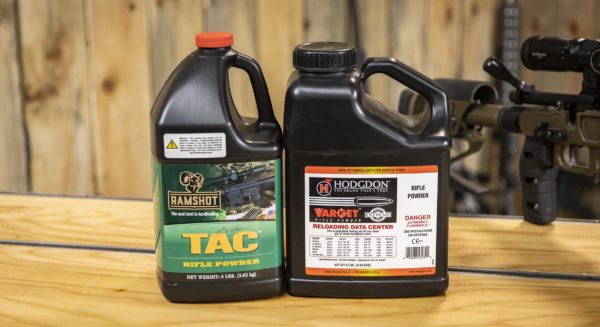
For this experiment we wanted an apples-to-apples comparison, using the same bullet, case, primer and cartridge. We selected two powders to compare head-to-head: Varget and Ramshot TAC. These powders were selected as they both have long-standing tales of success and fan bases, but almost more importantly, loads of both filled approximately the same percentage of the case. (This eliminated another possible variable in the experiment.) Varget is popular among F-class, service rifle shooters, etc. for highly accurate loads in .223, .308, 6 Dasher and others. It is an extruded, stick powder. Ramshot TAC has a similar following but as a ball powder is generally preferred for loading on a progressive or a powder drop.
About Varget
Varget is an extruded propellant in the Hodgdon line of Extreme series of powders. Varget features small, extruded grains for uniform metering, is insensitive to hot and cold temperatures and produces higher energy for improved velocities over other powders in its burning-speed class.
The powder ignites quickly and burns clean, translating into superb accuracy, higher scores and more clean, one-shot kills.
Varget is the perfect powder for shooting the 223 Remington with heavy bullets in competitive matches. Outstanding performance and velocity can be obtained in such popular cartridges as the 22-250 Remington, 308 Winchester, 30-06, 375 H&H and many more.
Available in 1 lb. and 8 lb. containers.
About Ramshot TAC
TAC is a double-base spherical propellant that sets the standard for extreme accuracy and reliability with heavy bullets in the 223 Remington and match applications in 308 Winchester. Excellent flow characteristics ensure consistent metering and charge weights for repeatable results with progressive loading equipment. It is the choice for shooters who demand precision and accuracy. Made in Belgium.
The Load
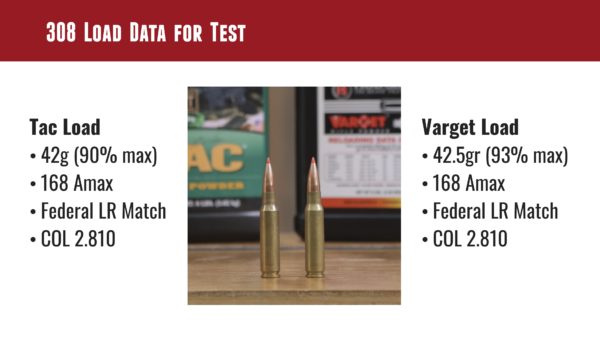
As previously mentioned, the only difference in the .308 loads chosen were the powders and weights. Each cartridge used a 168 gr. AMAX, Federal LRP primer and had an OAL of 2.810.
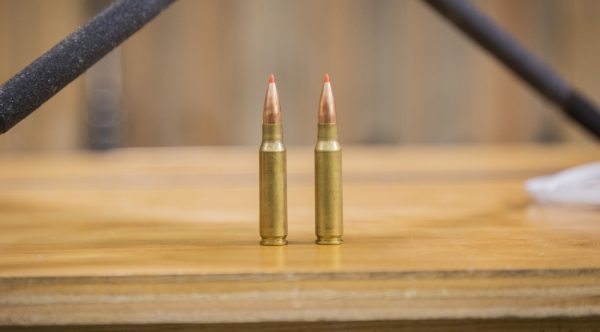
Ramshot TAC— 42 grain
I initially chose 308 because I thought the larger case capacity might give better test results. I have yet to test this, but research and conversations with partners have indicated that the volume really doesn’t matter. You should end up with the same percentage in change with a 223 or 308 when temperature testing.
Formulating the Test
I spoke with Hodgdon and researched what NATO requires for their test. NATO requires testing for safety, function and pressure at 70°F, -65°F and 140°F. 70°F is used as the baseline. Keep in mind this is not accuracy testing. We just want to ensure that the firearm will function and is safe for the operator (no blown/pierced primers, etc.).
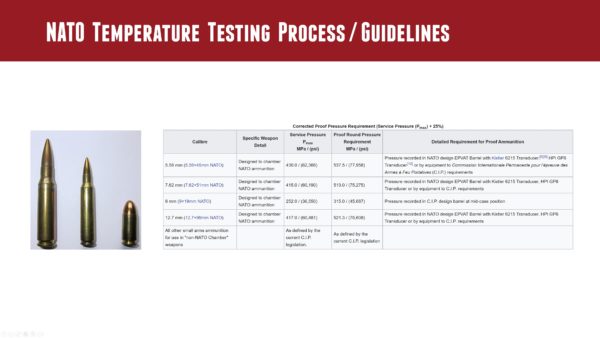
This is the first story we’ve published for this type of testing, so we will plan to expand on the data produced for this story by adding more powder types/SKUs to our test results. We’ll also be looking at equipment setups to make this kind of testing more routine and efficient.
Special thanks to Justin at Hodgdon who helped by providing insights and feedback on our test setup and parameters.
-65 F Extreme Cold Test
I loaded 30 rounds in total, 15 with Varget, 15 with Ramshot TAC. I separated the rounds into 5-round increments and loaded them into MDT polymer magazines.
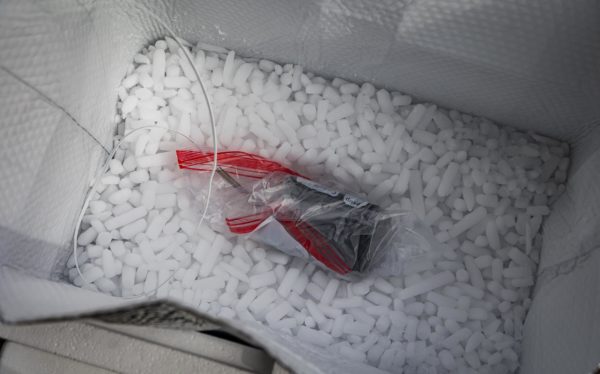
I used dry-ice to cool the magazines and rounds to -65°F, placing the loaded magazine into a Ziploc bag and surrounding it with another to keep moisture away from the cartridges before placing it into the cooler. I monitored the temperature of the rounds and magazine using a quality temperature probe inserted into the magazine. It took approximately 30 minutes for the temperature to stabilize to -65°F. At this point, I removed the mag from the cooler, quickly took it to the rifle and fired the five shots in succession.
Here’s what the rounds of ammunition looked like when taken out of the dry ice and allowed to freeze moisture from the surrounding air:
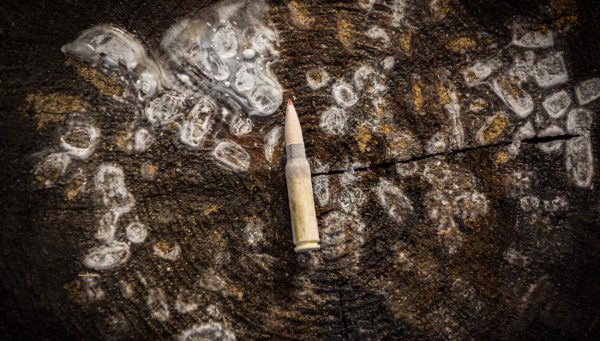
I waited for the rifle to return to ambient temperature and did the same for the second test powder.
Here’s a picture of the temperature probe we used to validate our temperatures during testing:
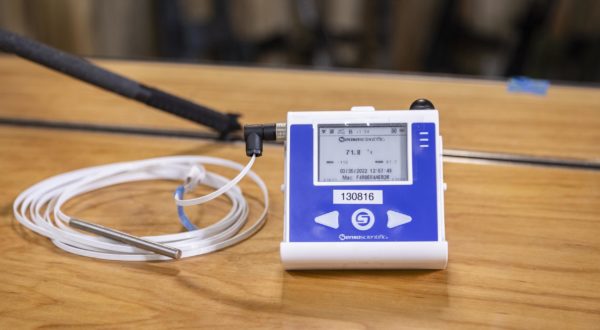
70 F “Room Temperature” Test
I conducted the tests for the remaining rounds in much the same way. For the 70°F test, a digital probe was inserted into the magazine to verify stable temperature. Nothing special needed to be done as our ambient room temperature (where the ammunition/magazine was stored) was at 70°F.
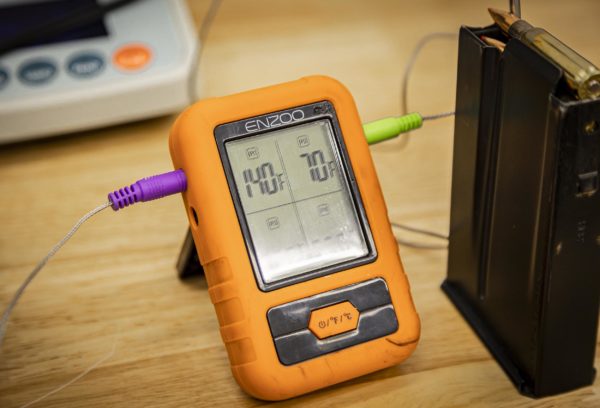
140 F “Hot” Test
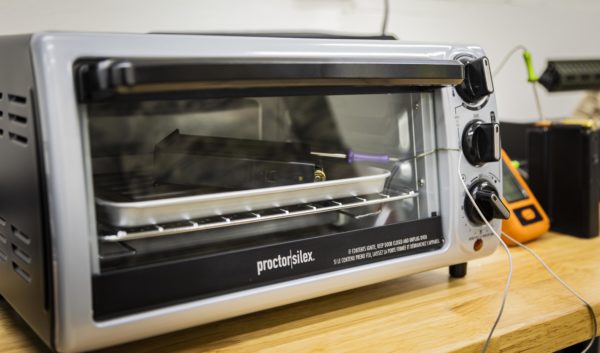
A toaster oven set to 140°F elevated the temperature of the loaded magazines— each equipped with a temperature probe. The magazines were monitored until the temperature stabilized at 140°F. Each magazine was removed quickly and taken to the rifle where the five rounds were fired in quick succession. Once again, I waited until the rifle returned to ambient temperature between each batch of five shots.
Rifle and Shooting Setup
I used the Caldwell G2 and accompanying user-friendly app to record velocities. One reason we used the G2 is the excellent mobile app that uses Bluetooth to record shots as they are fired. It’s easy to email these results and then input them into a spreadsheet.
Here’s our video covering the Caldwell G2: (full story HERE)
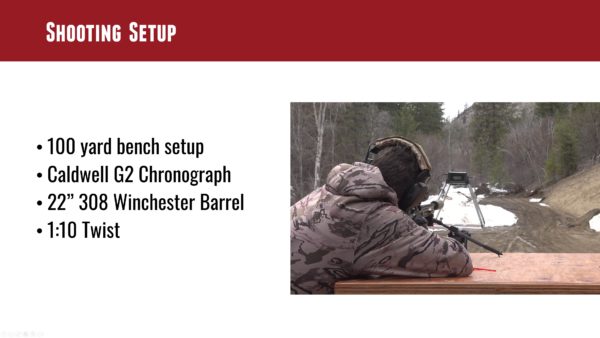
The Rifle
The 308 rifle used in this test was a Bighorn origin with a 22” 1-10 twist factory Savage Barrel. I used an XLR Magnesium chassis inlet for a Remington 700 with a weight kit, which allows for better balance, and an Athlon Aries BRT. (As a side note, I’ve run my .22 lr trainer in this chassis as well.)
The Data/Results
I expected the Varget to be more stable than the Ramshot TAC, but I expected a greater increase in velocity with higher temperatures across the board. Both powders performed better than I expected!
This doesn’t mean velocity fluctuations due to temperature are an old wives’ tale. Instead, it indicates technology has really progressed and manufacturers are doing a great job at producing temperature-stable powder. Ten years ago I shot a match with a friend and watched his impacts move from center to off target from morning to afternoon, just due to changes in the ambient temperature.
Here’s the graph of the data collected:
Key:
Red = Varget— slightly higher velocity, slight increase
Blue = TAC— more drastic increase
In this test, Varget was the superior performer. Here’s the numbers:
Above we can see that Varget had less than 1/3 the velocity change compared to TAC! That is very impressive, and evidence of Hodgdon’s Extreme line of powders and their temperature stability.
Why does it matter?
Temperature does matter and while these numbers may seem extreme, they do appear in real-life scenarios. A magazine sitting in the hot sun can reach well over 100°F while winters in Alaska and other climates regularly hit negative numbers. Know what temperature you will be shooting in and plan your loads accordingly. This is especially important to consider when traveling.
Looking Forward
Powder isn’t the only component that can be temperature sensitive. Next we’ll investigate the temperature sensitivity of primers.
Get the Gear
Keep an eye on Midsouth Shooters Supply for Varget and Ramshot TAC!
Caldwell Ballistic Precision G2 Chronograph – MSRP $259.99
Don’t miss out on Ultimate Reloader updates, make sure you’re subscribed!
Thanks,
Travis Fox
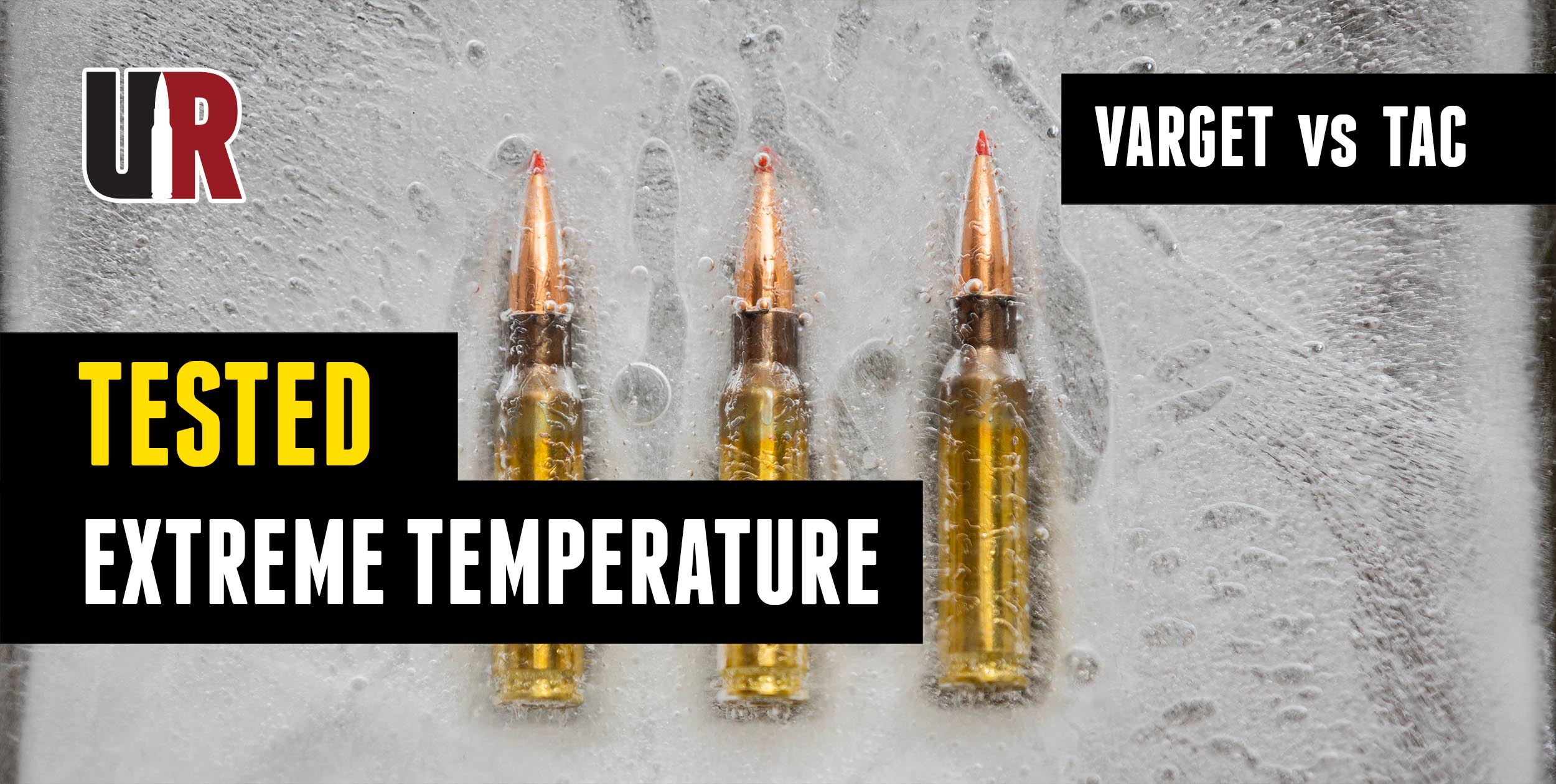
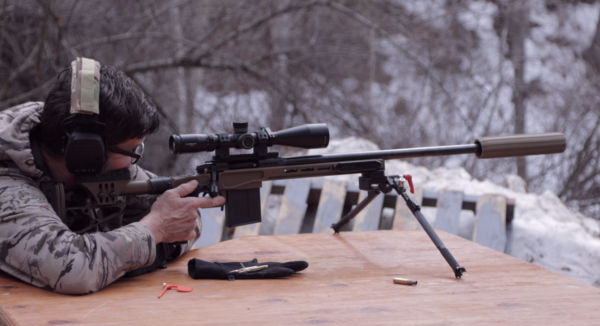
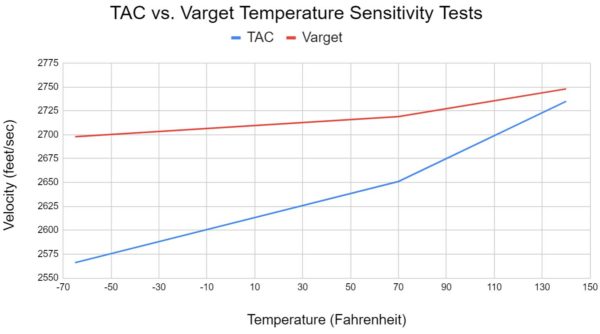



















































































I hunt with300wm loaded with 66 gr of H4350 and 190 berger I prepare in 90 deg temp and hunt at 30-40 deg and at times 60. I shot at do at 600 yds and missed two times the set up target at same spot and was 12 in low at 40 deg. I later did same at 60 deg and was 1 moa lower than setup preseason at 90 deg. I now have charts set up at 40–60-90 degrees and works well. Most everyone I asked said it should not happen but it did. I found some one online that did more extensive study that basically showed one moa change per 20 deg drop from 80 deg. I also did with imr 4350 and got same results. Hope to find that chart